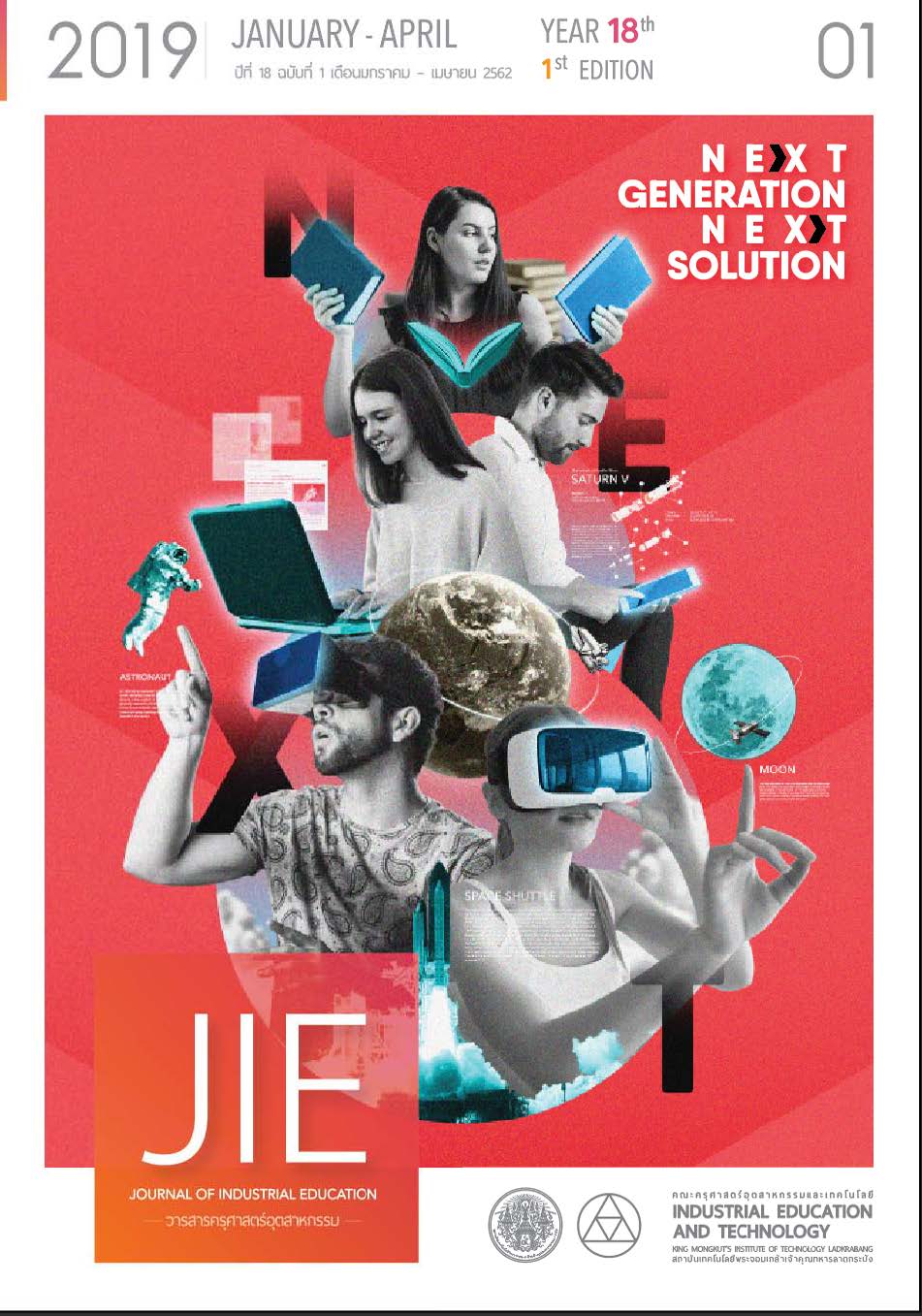ผลของการใช้การบ้านออนไลน์ต่อผลสัมฤทธิ์ทางการเรียนของนักศึกษาครูวิทยาศาสตร์ ชั้นปีที่ 1 ในรายวิชาเคมีทั่วไป
คำสำคัญ:
การบ้านออนไลน์, ผลสัมฤทธิ์ทางการเรียน, เคมีทั่วไป, สหสัมพันธ์, ความก้าวหน้าทางการเรียนบทคัดย่อ
งานวิจัยนี้มีจุดประสงค์เพื่อ 1) ศึกษาผลสัมฤทธิ์ทางการเรียนของนักศึกษาครูวิทยาศาสตร์ ในรายวิชาเคมีทั่วไป โดยใช้การบ้านออนไลน์ร่วมกับการจัดการเรียนรู้แบบปกติ 2) ศึกษาค่าสหสัมพันธ์ที่เป็นไปได้ของ คะแนนการบ้านออนไลน์ คะแนนแบบทดสอบวัดผลสัมฤทธิ์หลังการจัดการเรียนรู้ ผลรวมของคะแนนตัดเกรด และค่า normalized gain กลุ่มตัวอย่างของงานวิจัยนี้คือ นักศึกษาครูวิทยาศาสตร์ชั้นปีที่ 1 จำนวน 60 คน ที่ลงทะเบียนเรียนในรายวิชาเคมีทั่วไป 1 (SCE 1401) ที่มหาวิทยาลัยราชภัฏสวนสุนันทา เครื่องมือที่ใช้ในงานวิจัยนี้ได้แก่ แบบทดสอบวัดผลสัมฤทธิ์ทางการเรียนรายวิชาเคมีทั่วไปและการบ้านออนไลน์ประจำบท ข้อมูลที่ได้จะถูกวิเคราะห์ทางสถิติโดยใช้ ค่าเฉลี่ย การทดสอบทีแบบกลุ่มตัวอย่างไม่เป็นอิสระ และค่า normalized gain ผลการวิจัยพบว่าคะแนนผลสัมฤทธิ์หลังการจัดการเรียนรู้ในแต่ละบทของรายวิชาเคมีทั่วไปนี้สูงกว่าคะแนนผลสัมฤทธิ์ก่อนการจัดการเรียนรู้อย่างมีนัยสำคัญทางสถิติที่ระดับ 0.05 ค่าความก้าวหน้าทางการเรียนของนักศึกษาที่เพิ่มขึ้นจริงซึ่งถูกแสดงผ่านค่า normalized gain มีค่าเพิ่มขึ้นอยู่ในระดับ high gain ถึง medium gain ผู้วิจัยยังค้นพบความสัมพันธ์เชิงบวกระหว่างคะแนนการบ้านออนไลน์ ผลรวมคะแนนตัดเกรด และค่า normalized gain ในงานวิจัยนี้ด้วย ซึ่งผลนี้แสดงให้เห็นว่าสามารถใช้การบ้านออนไลน์เป็นเสมือนเป็นเครื่องทำนายคะแนนสอบและเกรดของนักศึกษาได้ ผู้วิจัยคาดว่าอาจเป็นเพราะข้อมูลป้อนกลับของการบ้านออนไลน์ซึ่งจะสามารถช่วยให้นักศึกษารู้ว่าต้องศึกษาบทเรียนใดเพิ่มเติมก่อนลงสนามสอบจริง นอกจากนี้ผู้วิจัยยังค้นพบว่าการบ้านออนไลน์อาจช่วยปรับปรุงลักษณะนิสัยในการเรียนของนักศึกษาในรายวิชาเคมีทั่วไปนี้ได้
เอกสารอ้างอิง
Arasasingham, R. D., et al. 2004. Using Knowledge Space Theory To Assess Student Understanding of Stoichiometry. Journal of Chemical Education, 81(10), p. 1517–1523.
Kozma, R. B., and Russell, J. 1997. Multimedia and Understanding: Expert and Novice Responses to Different Representations of Chemical Phenomena. Journal of Research in Science Teaching, 34(9), p. 949–968.
Russell, J. W., et al. 1997. Use of Simultaneous-synchronized Macroscopic, Microscopic, and Symbolic Representations to Enhance the Teaching and Learning of Chemical Concepts. Journal of Chemical Education, 74(3), p. 330–334.
Cheng, K. K.,et al. 2004. Using an Online Homework System Enhances Students’ Learning of Physics Concepts in an Introductory Physics Course. American Journal of Physics, 72(11), p. 1447–1453.
Fynewever, H. 2008. A Comparison of the Effectiveness of Web-based and Paper-based Homework for General Chemistry. Chemical Educator, 13(4), p. 264–269.
Penn, J. H., Nedeff, V. M., and Gozdzik, G. 2000. Organic Chemistry and the Internet: A Web-Based Approach to Homework and Testing Using the WE_LEARN System. Journal of Chemical Education, 77(2), p. 227–231.
Charlesworth, P., and Vician, C. 2003. Leveraging Technology for Chemical Sciences Education: An Early Assessment of WebCT Usage in First-Year Chemistry Courses. Journal of Chemical Education, 80(11), p. 1333–1337.
Dohn, N. B., et al. 2016. Affording Opportunities to Learn in Homework Online. The 10th International Conference on Networked Learning 2016, p. 242–250.
Arasasingham, R. D., et al. 2005. Assessing the Effect of Web-Based Learning Tools on Student Understanding of Stoichiometry Using Knowledge Space Theory. Journal of Chemical Education, 82(8), p. 1251–1262.
Richards-Babb, M. and Jackson, J. K. 2011. Gendered Responses to Online Homework Use in General Chemistry. Chemistry Education Research and Practice, 12(4), p. 409–419.
Richards-Babb, M., et al. 2015. Student Perceptions of Online Homework Use for Formative Assessment of Learning in Organic Chemistry. Journal of Chemical Education, 92(11), p. 1813-1819.
Jadsada Ratniyom, Suttipong Boonphadung and Thassanant Unnanantn. 2016. The Effects of Online Homework on First Year Pre-service Science Teachers’ Learning Achievements of Introductory Organic Chemistry. International Journal of Environmental and Science Education, 11(15), p. 8088–8099.
Cole, R. S., and Todd, J. B. 2003. Effects of Web-Based Multimedia Homework with Immediate Rich Feedback on Student Learning in General Chemistry. Journal of Chemical Education, 80(11), p. 1338–1343.
Hall, R. W., et al. 2001. Automated, Web-based, Second-chance Homework. Journal of Chemical Education, 78(12), p. 1704–1708.
Lonn, S., and Teasley, S. D. 2009. Saving Time or Innovating Practice: Investigating Perceptions and Uses of Learning Management Systems. Computers & Education, 53(3), p. 686–694.
Olivier, G. W. J., Herson, K., and Sosabowski, M. H. 2001. WebMark—A Fully Automated Method of Submission, Assessment, Grading, and Commentary for Laboratory Practical Scripts. Journal of Chemical Education, 78(12), p. 1699–1703.
Teeracha Santhong, Piya Supavarasuwat and Wisuit Sunthonkanokpong. 2016. Development of an Online Grading and Submission System: A Case Study of Vocational Education Institute Center 1 Journal of Industrial Education, 15(1), p. 98–105.
Chamala, R. R., et al. 2006. EPOCH: An Organic Chemistry Homework Program That Offers Response-specific Feedback to Students. Journal of Chemical Education, 83(1), p. 164–169.
Lipscomb, T. 2018. Creating Quizzes with Google Forms. Retrieved November 12, 2018, from https://www.linkedin.com/pulse/creating-quizzes-google-forms-travis-lipscomb.
Chang, R. 2010. Chemistry. New York: McGraw-Hill.
Silberberg, M. and Amateis, P. 2014. Chemistry The Molecular Nature of Matter and Change. New York: McGraw-Hill Education.
Hake, R. R. 1998. Interactive-engagement versus traditional methods: A Six-thousand-student Survey of Mechanics Test Data for Introductory Physics Courses. American Journal of Physics, 66(1), p. 64–74.
Apisit Tongchai, et al. 2007. A New Assessment Method by Using Pre-test and Post-test Scores. HCU Journal, 11(21), p. 86–94
Parker, L. L. and Loudon, G. M. 2013. Case Study Using Online Homework in Undergraduate Organic Chemistry: Results and Student Attitudes. Journal of Chemical Education, 90(1), p. 37–44.
Bowman, C., Gulacar, O. and King, D. 2014. Predicting Student Success via Online Homework Usage. Journal of Learning Design, 7(2), p. 47–61.
ดาวน์โหลด
เผยแพร่แล้ว
รูปแบบการอ้างอิง
ฉบับ
ประเภทบทความ
สัญญาอนุญาต
"ข้อคิดเห็น เนื้อหา รวมทั้งการใช้ภาษาในบทความถือเป็นความรับผิดชอบของผู้เขียน"



